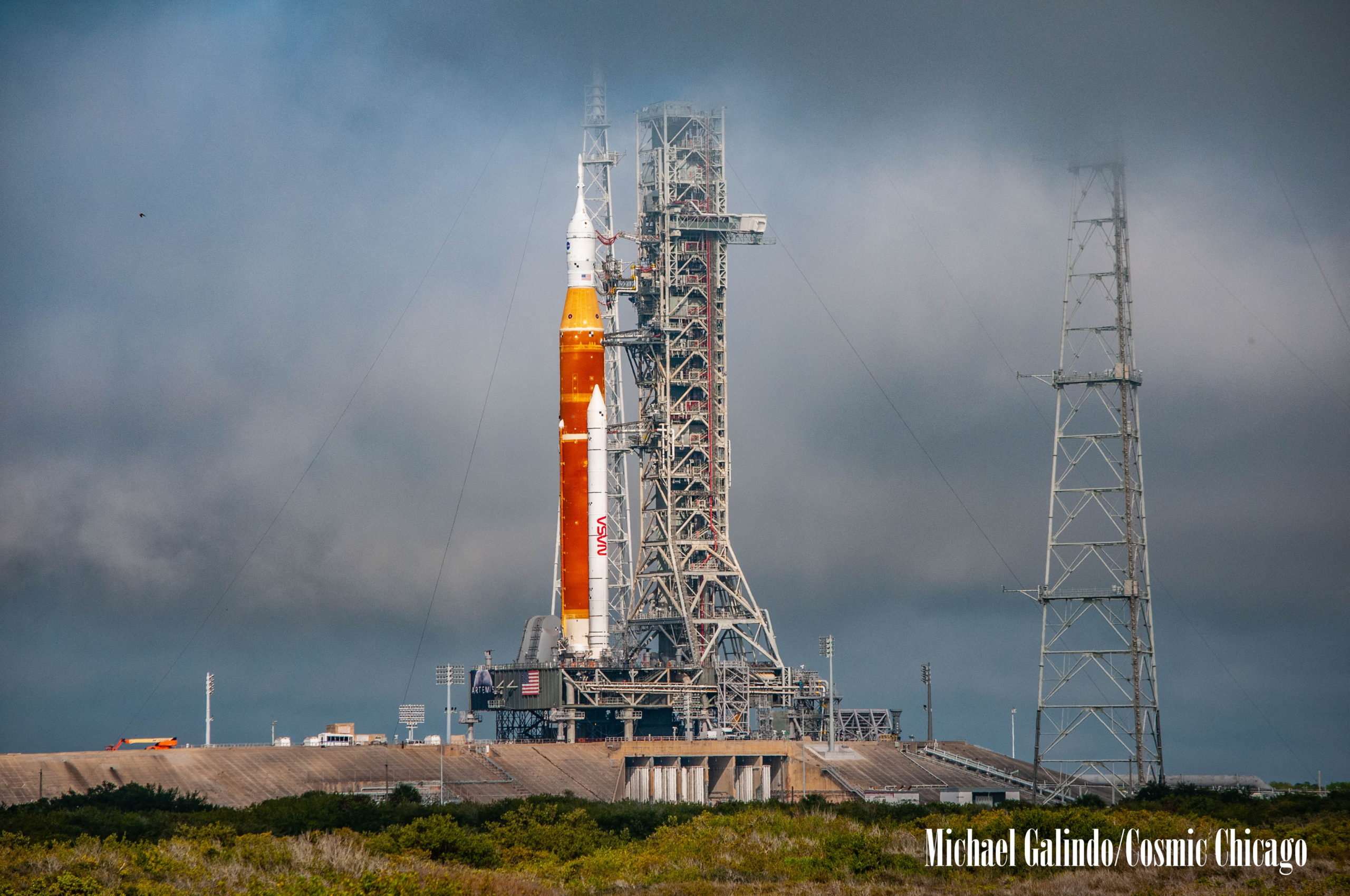Now that the Space Launch System (SLS) rocket is on the launchpad, the final test before launch has begun, the Wet Dress Rehearsal (WDR). The WDR began after 4 pm CT or L-45 hours before the targeted test T-0.
The WDR will allow the launch team to practice propellant loading operations, conduct a full launch countdown, demonstrate the ability to recycle the countdown clock, and unload the propellant from the rocket.
Teams will be able to refine and practice their timelines and procedures for the launch. They will also conduct weather briefings and pre-planned holds in the count. Every phase of the countdown, except actually launching the rocket, will be practiced.

The test began with the Orion spacecraft hatch being closed and sealed, then the crew access arm retracted. Orion was powered up and will remain that way for the duration of the test. During liftoff, water in the sound suppression system dampens the sound of the rocket, so the water tank used is filled. SLS Core Stage batteries are charged to prepare to power up the stage.
At approximately 8 hours 40 minutes, the countdown will enter a planned hold. The hold allows the launch director and mission management team to conduct a weather briefing and a GO or No-Go poll to begin loading the SLS with propellant. Once the Go is given the countdown resumes and propellant loading begins.
Before propellant loading can begin, the fuel lines and tanks inside the SLS have to be “conditioned” by a process known as chilldown. Gaseous Nitrogen (GN2) is first passed through the fuel lines and tanks. If this is not done, damage can occur due to the extreme cold of the fuels. Liquid Oxygen is -297*F and Liquid Hydrogen is -423*F.
The RS-25 engines on the Core Stage are powered by Liquid Oxygen (LOX) and Liquid Hydrogen (LH2). These fuels get loaded into the SLS via two areas on the Mobile Launch Platform (MLP). The Tail Service Mast provides umbilicals that will fuel the Core Stage, located at the base of the MLP or zero-level. At the 240 foot level is the Interim Cryogenic Propulsion Stage (ICPS) umbilical, which provides fuel to the ICPS. During the actual launch, the umbilicals will detach and swing away from SLS once the countdown reaches zero.

During propellant loading, the launch team will test systems on the SLS and Orion, ensuring that they are functioning and that Launch Control Center and Mission Control in Houston, Texas, receive telemetry data. The countdown will enter another hold around the L-40 minute mark, allowing the launch director to conduct a poll to ensure the team is ready to enter the Terminal Count for testing purposes.
At T-10 minutes and counting, WDR Run 1 will begin. Safety systems and pyrotechnics throughout the rocket are armed. Ground power supply to the SLS and Orion are stopped, and both will switch to internal power. Ground fuel replenishment is terminated.
Then at T-33 seconds, the ground launch sequencer sends a cut-off command, and the countdown halts. The launch team will then “safe” the launch vehicle by disarming pyrotechnics throughout the rocket, reestablishing the ground power supply, and replenishing propellants. The countdown will be recycled back to T-10 minutes. All this should take approximately 1 hour.

After this has been completed and the launch team is ready to proceed, WDR Run 2 will begin. Just as in Run 1, safety systems are armed, ground power stops, and fuel replenishment terminates. At T-30 seconds, the SLS Core Stage flight computer will begin its automated flight sequence. At T-9.34 seconds, the ground launch sequencer will manually halt the countdown simulating a launch scrub due to weather or technical issue.
The launch vehicle will again be made “safe,” and the launch team will go through procedures to drain the fuel from the rocket. The wet dress rehearsal will conclude.
Several days after the WDR, the SLS will roll back to the Vehicle Assembly Building (VAB). Once there, technicians will begin removing sensors on the rocket used for monitoring during the WDR. Orion and SLS batteries get charged, last-minute cargo is loaded, and final checkouts are made. NASA will review all the data gathered from the WDR before setting a launch date. Once a launch date is set, the SLS and Orion roll out to the launchpad for the final time, about a week before launch.
This article was previously published by Michael Galindo on ChicagoNow.

